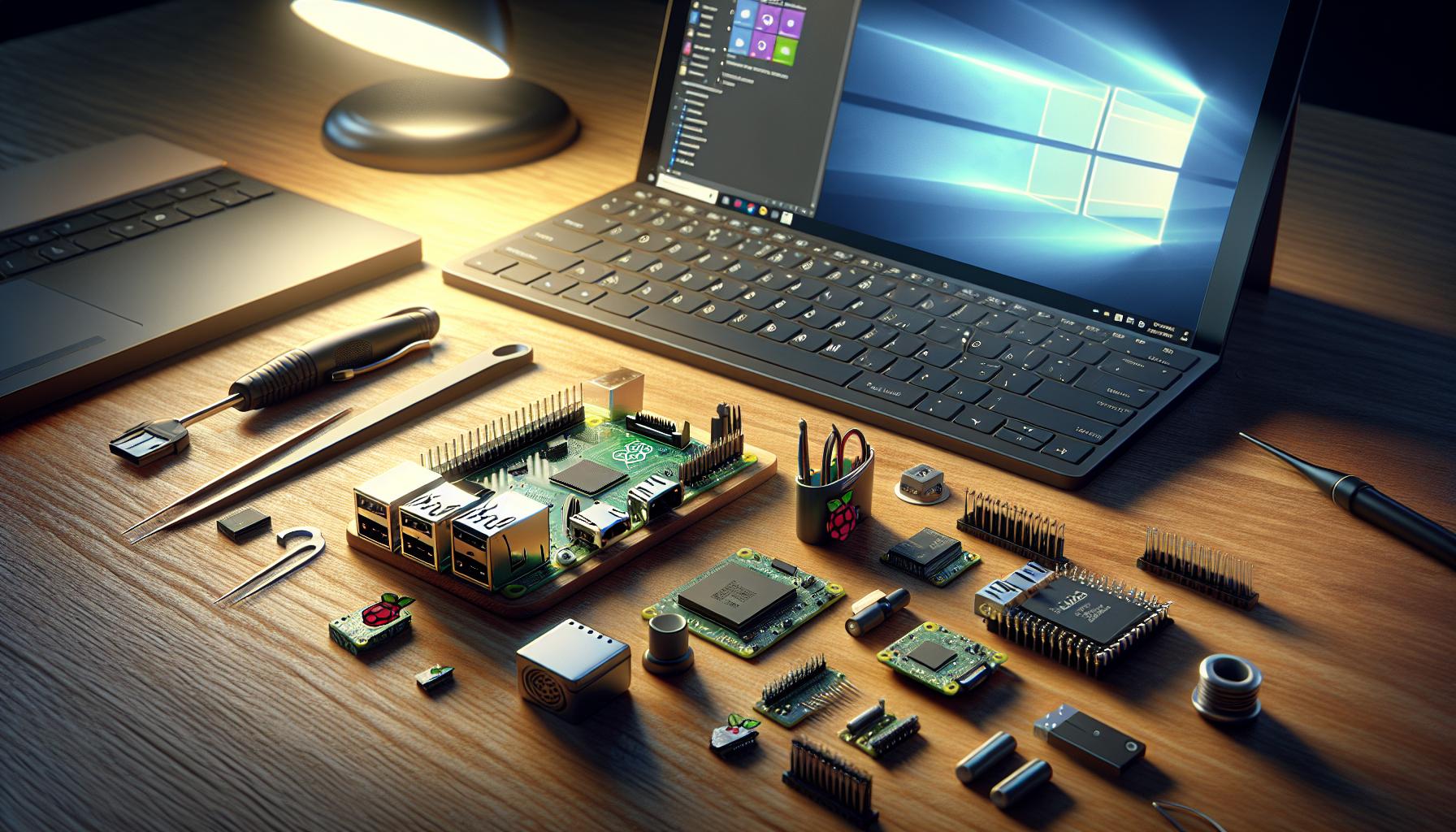In a world where everything from your fridge to your thermostat is getting a tech upgrade, Windows 10 IoT steps in like the superhero of the Internet of Things. It’s not just another operating system; it’s the secret sauce that powers smart devices, making them smarter and more efficient. Imagine your toaster sending you a text when it’s done—now that’s the future!
What is Windows 10 Iot
Windows 10 IoT serves as a specialized operating system designed for Internet of Things devices. This platform enhances the capabilities of everyday appliances, making them smarter and more responsive.
Definition of Windows 10 IoT
Windows 10 IoT refers to a version of Windows 10 tailored for embedded and smaller computing devices. It addresses the unique needs of smart technology, providing a foundation for devices that connect and communicate over the internet. These devices typically include industrial equipment, retail kiosks, and smart home products. The operating system simplifies development processes by offering familiar tools and APIs, enabling developers to create applications that interact seamlessly with embedded hardware.
Key Features of Windows 10 IoT
Windows 10 IoT boasts several key features that make it attractive for device manufacturers. Security enhancements protect connected devices, utilizing features like Device Guard and Windows Defender. Compatibility with Windows applications allows developers to leverage existing code, accelerating deployment. Robust connectivity options, including Wi-Fi, Ethernet, and Bluetooth, facilitate seamless integration with clouds and networks. Furthermore, system updates enhance longevity, ensuring devices remain up-to-date with the latest features and security measures.
Differences Between Windows 10 IoT and Other Versions

Windows 10 IoT offers distinct features tailored for specific device needs. Two main variants exist: Windows 10 IoT Core and Windows 10 IoT Enterprise.
Windows 10 IoT Core
Windows 10 IoT Core serves small, embedded devices. It streamlines development by providing a lightweight version of Windows 10 optimized for lower resource consumption. Developers can employ Universal Windows Platform apps, allowing seamless deployment across various IoT hardware. This variant lacks a traditional desktop interface, facilitating easier management in headless devices. Security remains a priority through features like automatic updates, ensuring a robust defense against threats.
Windows 10 IoT Enterprise
In contrast, Windows 10 IoT Enterprise caters to more complex devices that require advanced management and security. This variant includes full desktop functionalities, providing compatibility with existing Windows applications. Organizations can utilize Windows Enterprise features, such as Device Lockdown and virtualization support. Enhanced security is achieved through additional features like Windows Defender Application Guard and BitLocker. This version proves beneficial for industries needing comprehensive control over their devices and environments.
Use Cases for Windows 10 IoT

Windows 10 IoT plays a critical role in various industries. Its flexibility and robustness enable innovative applications across different sectors.
Industrial Automation
Industrial automation benefits immensely from Windows 10 IoT. Factories use this operating system to control machinery, monitor systems, and manage workflows. With built-in support for various communication protocols, it facilitates seamless integration with existing equipment. Enhancements such as real-time analytics boost efficiency, allowing manufacturers to respond quickly to operational changes. Additionally, remote access features enable engineers to troubleshoot issues from anywhere, reducing downtime.
Smart Home Devices
Smart home devices thrive on the capabilities of Windows 10 IoT. Homeowners utilize this operating system for a range of applications, from smart thermostats to security systems. Windows 10 IoT enhances device interconnectivity, allowing appliances to communicate and automate tasks. Users can control devices through voice commands or smartphone apps, providing convenience and energy savings. Moreover, its security features protect personal data, ensuring a safe home environment connected to the Internet of Things.
Getting Started with Windows 10 IoT

Understanding the initial requirements for deploying Windows 10 IoT is essential for effective implementation.
Hardware Requirements
Devices must meet specific hardware specifications to run Windows 10 IoT efficiently. A minimum processor of 400 MHz with x86 or ARM architecture is necessary. Memory requirements start at 512 MB RAM for Windows 10 IoT Core, while IoT Enterprise devices generally require at least 2 GB RAM. Storage space needs range from 1 GB for Core to 16 GB for Enterprise, ensuring sufficient capacity for applications and data. Connectivity options such as Wi-Fi, Ethernet, and Bluetooth enhance the device’s communication capabilities. Users must consider additional hardware capabilities, ensuring compatibility with sensors and peripherals that support the intended IoT solutions.
Development Tools
Developers benefit from using various tools when building applications for Windows 10 IoT. Visual Studio supports Universal Windows Platform apps, streamlining the development process. Development kits, like the Raspberry Pi or MinnowBoard, provide access to runtime environments for testing. The Windows SDK supplies essential APIs and libraries tailored for IoT functionality. Testing and debugging tools ensure applications perform optimally on designated hardware. Additionally, Microsoft Azure offers cloud services to further expand the possibilities of IoT solutions, enabling robust data processing and analytics capabilities.
Conclusion
Windows 10 IoT stands at the forefront of the Internet of Things revolution. By transforming ordinary devices into smart solutions it paves the way for enhanced connectivity and functionality across various industries. With its tailored versions catering to both simple and complex devices Windows 10 IoT provides the necessary tools for developers to create innovative applications while ensuring robust security measures.
As the demand for smarter technology continues to grow Windows 10 IoT is poised to play a crucial role in shaping the future of automation and connectivity. Its versatility and ease of use make it an ideal choice for businesses and developers looking to harness the full potential of IoT. Embracing this operating system can lead to significant advancements in efficiency and user experience.



